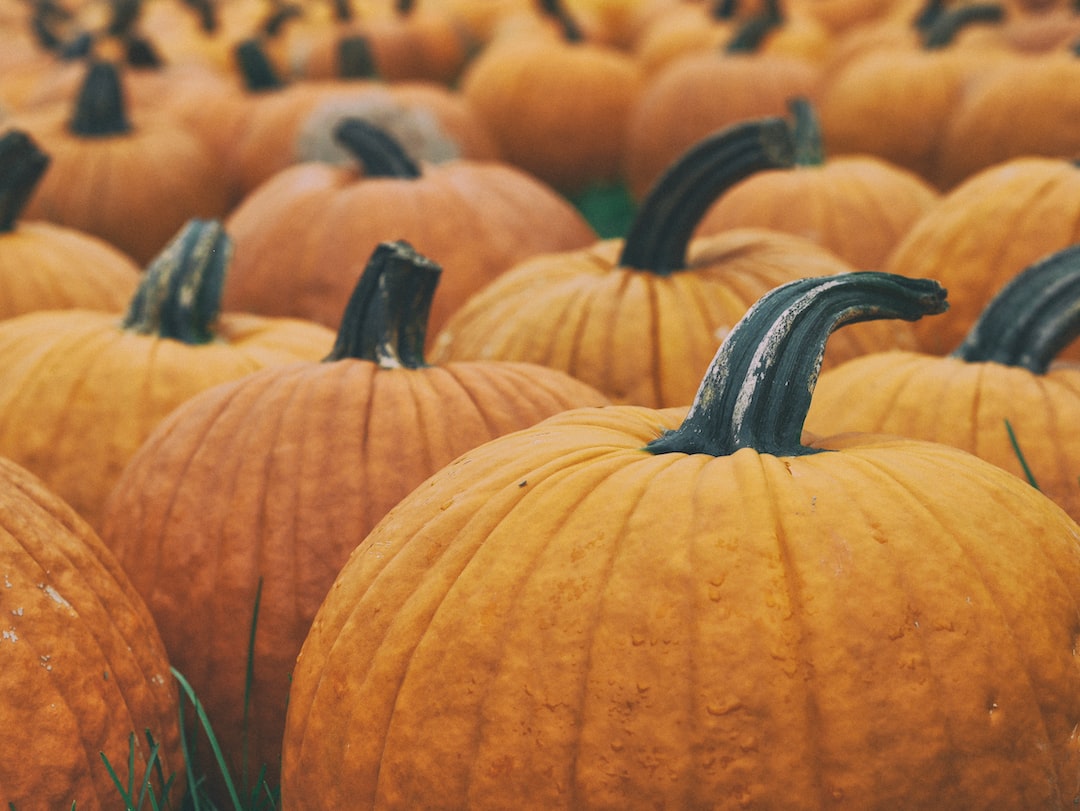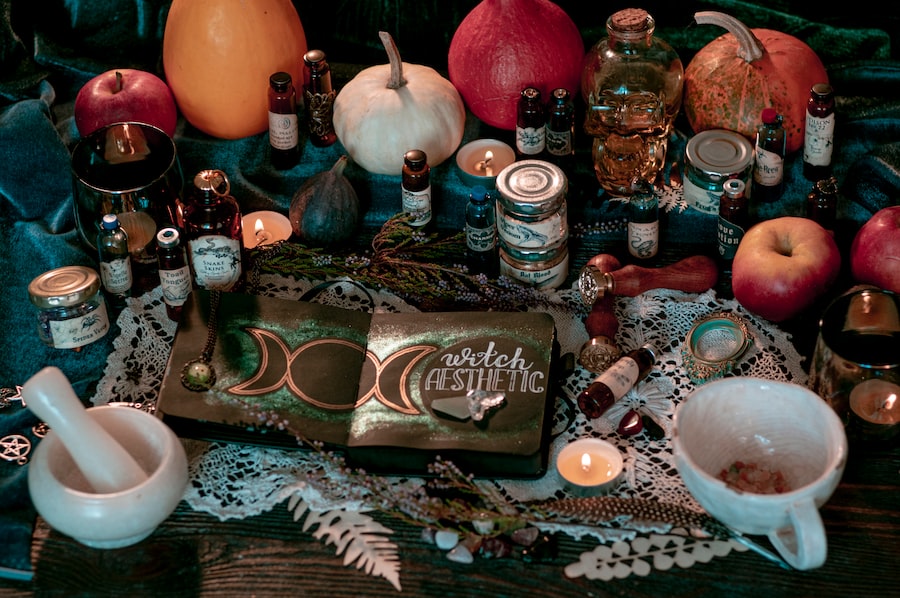Harvest Time: How to Know When Your Pumpkin is Ripe for the Picking

Picking a ripe pumpkin is a crucial step in the process of pumpkin harvesting. Whether you plan to use your pumpkins for carving, cooking, or decoration, selecting a ripe pumpkin ensures that you get the best flavor, texture, and longevity out of your harvest. In this article, we will explore the importance of picking a ripe pumpkin and discuss various methods to determine if a pumpkin is fully grown and ready for harvest. From examining physical characteristics to performing simple tests, we will provide you with the knowledge and tools to confidently pick the perfect pumpkin.
Key Takeaways
- Timing is crucial when it comes to picking a ripe pumpkin.
- Signs of maturity include a hard skin, a fully developed stem, and a hollow sound when tapped.
- The color of a pumpkin can indicate its ripeness, with a deep orange hue being ideal.
- The strength of a pumpkin’s stem can also be a good indicator of its maturity.
- The finger test involves pressing on the skin to check for firmness and ripeness.
The Importance of Timing: Why Picking a Ripe Pumpkin Matters
Timing is everything when it comes to pumpkin harvesting. Picking a pumpkin too early can result in an underdeveloped fruit that lacks flavor and texture. On the other hand, leaving a pumpkin on the vine for too long can lead to overripeness, making it prone to rotting and spoiling. It is essential to find the sweet spot where the pumpkin has reached its peak maturity but is not yet past its prime.
Picking an unripe pumpkin can have negative effects on both taste and texture. An unripe pumpkin may have a bitter taste and a tough, fibrous texture that is not ideal for cooking or carving. Additionally, unripe pumpkins are more susceptible to rotting and spoiling, as they have not fully developed their protective skin and are more prone to damage.
Signs of Maturity: How to Identify a Fully Grown Pumpkin
To determine if a pumpkin is fully grown and ready for harvest, it is important to look for certain physical characteristics. A mature pumpkin should have a consistent color throughout its surface, indicating that it has reached its full potential. The skin should be firm and hard, with no soft spots or blemishes. The stem should be dry and firmly attached to the pumpkin.
When examining a pumpkin, pay attention to its size and weight. A fully grown pumpkin should have reached its maximum size and should feel heavy for its size. If a pumpkin still appears small or feels light, it may not have fully matured and should be left on the vine for a little longer.
The Color of Ripeness: Understanding the Role of Hue in Pumpkin Harvesting
| Experiment | Pumpkin Variety | Harvest Date | Color Metric | Result |
|---|---|---|---|---|
| 1 | Jack-O-Lantern | September 15 | Hue Angle | 57.3 |
| 2 | Howden | September 15 | Hue Angle | 62.1 |
| 3 | Jack-O-Lantern | September 22 | Hue Angle | 54.8 |
| 4 | Howden | September 22 | Hue Angle | 59.2 |
| 5 | Jack-O-Lantern | September 29 | Hue Angle | 52.1 |
| 6 | Howden | September 29 | Hue Angle | 56.7 |
The color of a pumpkin is a significant indicator of its ripeness. As a pumpkin matures, its color changes from green to orange. This transformation occurs due to the breakdown of chlorophyll and the production of carotenoids, which give pumpkins their characteristic orange hue.
When selecting a ripe pumpkin, look for a vibrant, deep orange color. Avoid pumpkins that are still predominantly green, as they are likely underripe. However, keep in mind that some pumpkin varieties naturally have different colors, such as white or yellow. In these cases, look for a consistent and fully developed color that is characteristic of the specific variety.
The Sound Test: A Simple Trick to Check if Your Pumpkin is Ready
The sound test is a simple yet effective method to determine if a pumpkin is ripe. To perform the sound test, gently tap the pumpkin with your knuckles or flick it with your finger. If the pumpkin produces a hollow sound, it is likely ripe and ready for harvest. On the other hand, if the pumpkin sounds dull or thuds when tapped, it may still be unripe and should be left on the vine for further maturation.
When performing the sound test, be careful not to apply too much force or pressure to the pumpkin, as this can cause damage. Use a light touch and listen for the distinct hollow sound that indicates ripeness.
Stem Strength: How to Gauge Pumpkin Maturity by the Strength of Its Stem

The strength of a pumpkin’s stem can provide valuable insights into its maturity. A fully grown and ripe pumpkin will have a dry and sturdy stem that is firmly attached to the fruit. Gently tug on the stem to test its strength. If the stem easily breaks off or feels soft and pliable, the pumpkin may still be underripe. However, if the stem holds firm and does not detach easily, it is likely mature and ready for harvest.
When testing the strength of a pumpkin’s stem, be cautious not to apply excessive force or pull too hard, as this can cause damage to the fruit. Use a gentle tug to assess the stem’s strength and make your determination.
The Finger Test: Feeling Your Way to a Perfectly Ripe Pumpkin
The finger test is another method to assess the ripeness of a pumpkin. To perform the finger test, press your fingernail into the skin of the pumpkin. If the skin is hard and resists indentation, the pumpkin is likely ripe. However, if the skin feels soft and gives way under pressure, it may still be unripe.
When conducting the finger test, be gentle and avoid applying too much pressure, as this can cause damage to the pumpkin. Use a light touch and pay attention to the resistance of the skin to determine ripeness.
The Sun Factor: How Sunlight Affects Pumpkin Maturity and Harvesting
Sunlight plays a crucial role in pumpkin growth and ripening. Pumpkins require ample sunlight to produce energy through photosynthesis, which fuels their growth and development. Adequate exposure to sunlight ensures that pumpkins reach their full size and develop their characteristic color.
To take advantage of sunlight when harvesting pumpkins, choose a sunny day for harvesting. The warmth and light from the sun will help dry out any moisture on the surface of the pumpkins, reducing the risk of rotting during storage. Additionally, sunlight can enhance the color development of pumpkins, making them more vibrant and visually appealing.
The Role of Weather: How Temperature and Rainfall Affect Pumpkin Growth and Ripeness
Weather conditions, particularly temperature and rainfall, can significantly impact pumpkin growth and ripening. Pumpkins thrive in warm temperatures, typically between 70-90°F (21-32°C). Cooler temperatures can slow down the ripening process, while excessively hot temperatures can cause the pumpkins to become stressed and develop uneven ripening.
Rainfall also plays a role in pumpkin growth and ripening. While pumpkins require regular watering, excessive rainfall can lead to waterlogged soil and increase the risk of rotting. On the other hand, prolonged periods of drought can stunt pumpkin growth and result in smaller fruits.
When considering weather conditions for pumpkin harvesting, aim for a dry period with moderate temperatures. This will ensure that the pumpkins have had enough time to fully mature without being exposed to excessive moisture or extreme heat.
Harvesting Techniques: Best Practices for Picking a Ripe Pumpkin
When it comes to harvesting ripe pumpkins, there are a few best practices to keep in mind. First, use a sharp knife or pruning shears to cut the stem of the pumpkin, leaving a few inches attached to the fruit. Avoid twisting or pulling the pumpkin off the vine, as this can damage the stem and increase the risk of rotting.
Next, handle the pumpkins with care to avoid bruising or puncturing the skin. Place them gently in a basket or container, ensuring that they are not stacked on top of each other. Avoid dropping or tossing the pumpkins, as this can cause internal damage that may lead to spoilage.
Finally, harvest pumpkins early in the morning when temperatures are cooler. This reduces the risk of sunburn on the fruits and allows for easier handling and transportation.
Storage Tips: How to Keep Your Ripe Pumpkin Fresh for Longer
Proper storage is essential to extend the shelf life of your ripe pumpkins. Start by cleaning the pumpkins to remove any dirt or debris. Wipe them gently with a damp cloth and allow them to air dry completely before storing.
Choose a cool, dry, and well-ventilated area for storage, such as a basement or garage. Avoid storing pumpkins in direct sunlight or areas with high humidity, as this can accelerate spoilage. Place the pumpkins on a raised surface, such as a wooden pallet or cardboard, to allow for air circulation and prevent rotting.
Inspect the pumpkins regularly for any signs of decay or damage. Remove any pumpkins that show signs of rotting to prevent the spread of mold and spoilage to other fruits.
Picking a ripe pumpkin is crucial for maximizing flavor, texture, and longevity. By understanding the signs of maturity, such as physical characteristics and color changes, you can confidently select fully grown pumpkins. Simple tests like the sound test, stem strength test, and finger test provide additional tools to determine ripeness.
Factors like sunlight and weather conditions also play a role in pumpkin growth and ripening. By considering these factors when harvesting, you can optimize the quality of your pumpkins. Finally, proper harvesting techniques and storage practices ensure that your ripe pumpkins stay fresh for longer.
With these tips and techniques in mind, you can confidently pick and store ripe pumpkins that will be perfect for carving, cooking, or decoration. Enjoy the fruits of your labor and savor the flavors of fall!



